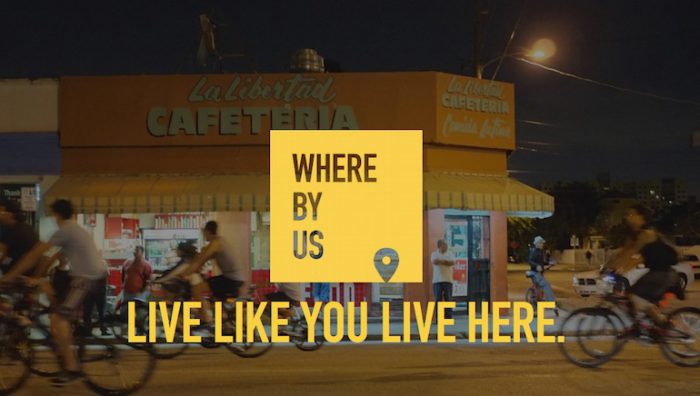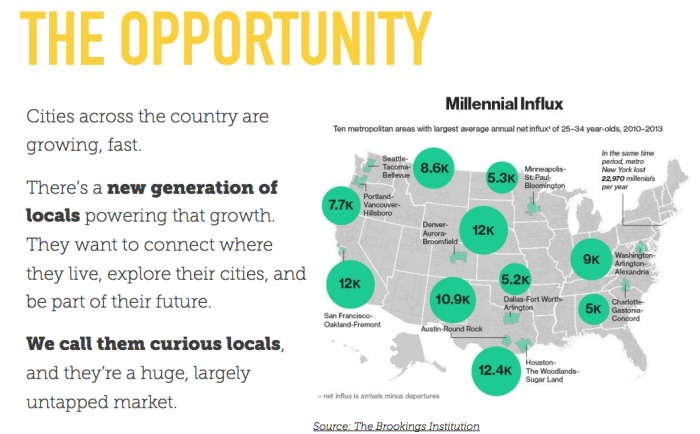
Seven months after launching its second newsletter product in a new city, WhereBy.us — a startup focused on being a parent company for local news organizations across the country — is gearing up for an expansion to three more cities this year and is inviting its members to become part of the company along the way.
WhereBy.Us has made a name for itself in Miami and Seattle, where it has launched the first two iterations of its local news/community engagement model — The New Tropic and The Evergrey, respectively. The model focuses on a daily newsletter — 25 percent of The New Tropic’s 20,000 subscribers open it each day, and as do 40 percent of The Evergrey’s 4,000 subscribers — engagement events, and social media content to share with followers. It has $1.6 million in annualized revenue right now.The company started a second round of fundraising this year with a special option for local supporters who may not have the big bucks like angel investors. That’s the type of money they brought in during WhereBy.Us’s first round in 2016, for a total of $750,000. Options to invest in WhereBy.Us this time around start at $500 through its SeedInvest profile. Between its higher-level investors and SeedInvest contributors, they’ve already raised more than $50,000 in a month.
“Typically, at the stage we’re at in this company, we wouldn’t be taking money from angel investors that are under $20,000. Being able to bring that barrier way down is pretty cool,” CEO and cofounder Christopher Sopher, previously of the Knight Foundation, said. (Disclosure: Knight, an early funder of WhereBy.us, also provides support to Nieman Lab. Sopher also wrote a couple pieces for us way back when.)
“There’s so much pressure in traditional startup language and the startup world about valuations and round size and all these kinds of things,” Sopher said. “Sometimes I think it’s possible to run at the wrong thing, at the numbers or the process, rather than raising money and finding investors that work for the mission that you’re trying to build…[and] being intentional about the outcome.”
This intention of inclusivity has guided WhereBy.us since its beginnings as an idea for a civic incubator. The concept was meant to connect urban-dwelling “curious locals” with civic engagement projects to build the future of cities, Sopher said. Now, WhereBy.us has kept the “community lens” at its core while building out the media and journalism aspect as a tool.
As former Nieman Lab writer Joseph Lichterman described at the time of The Evergrey’s launch last year, WhereBy.us is situating itself at the intersection of journalism trying to figure itself out and businesses trying to figure out how to reach younger consumers — who usually happen to be living in cities.WhereBy.Us is one of a number of media companies trying to create new models for metro news. Jim Brady’s Spirited Media launched Billy Penn in Philadelphia in 2014, and expanded to Pittsburgh this year. In North Carolina, the Charlotte Agenda is on track to make $850,000 this year and recently expanded to Raleigh. [Note: the Raleigh version was shuttered in December after four months of operation.]
In Miami, WhereBy.Us has built its business around reaching younger residents with both editorial and commercial products.
About 80 percent of WhereBy.Us’s revenue comes from creative agency work that uses the company’s data, research, and expertise to understand the local market. Another 10 percent of revenue is generated through events, and the last 10 percent comes from membership and other sources. A few subscription-based products are in the works. The company makes no money from display advertising.
Now, Sopher says 70 percent of their revenue comes from the creative agency, 20 percent comes from advertising in our newsletters, and 10 percent comes from membership.
WhereBy.us has been aggressively building out its products, led by cofounder, coder, and former newsroom-dweller Rebekah Monson. Most of their products center around the two newsletters, since they’re the backbone of communication with their communities. Monson’s team developed a platform for organizations of all sizes desiring ad space in the newsletters to build their own promotions into the production workflow. And as part of a fellowship with the Reynolds Journalism Institute, they’re also working on analyses of user data and developing an open source set of tools for other publishers to “do a better job of understanding and making actionable user data as we build out our revenue models,” Monson explained.
“We’ve built a lot of tools for us to help do better journalism, but the next phase is understanding our users better and better community participation,” Monson said. “As a small media organization, you can’t dominate on the information as much as the [larger] media players, but it puts you in a position to support that work and close some feedback loops around that.”
This funding round — which includes supporters beyond the SeedInvest profile, aims again at $750,000 and closes at the end of August — is one kind of feedback loop. Sopher and Monson said they were asked by followers of The New Tropic and The Evergrey how to contribute without being professional investors. Allowing audience members to become part of the company represented a greater investment, literally and figuratively, that smaller-scale crowdfunding platforms like Kickstarter or GoFundMe didn’t offer.
“Kickstarter is a great thing to do, [but] the folks who participate [in SeedInvest] are actually investing in our company,” Sopher said. “As the company succeeds, so would those people. It actually buys in folks to the mission and success of the company rather than a specific project where you get a reward.”
As some people’s attachment to WhereBy.Us’s products grows deeper, Sopher and Monson are also hoping to grow broader.
Plans are sketched out in their SeedInvest deck to expand to three additional cities by the end of 2017, seven more next year, and even more the following year to reach a total of 25 by 2019. (Each launch team for a new city only requires two hires — one content writer and one community manager — according to the deck.) But when I asked them about what markets they’re looking at for this year, they said it’s still “in development.”
“Miami and Seattle on paper share a lot of similarities, but the culture of those places are extraordinarily different,” Monson added. “It takes a little more front-end work to be effective at our mission than acting like everything can fit in a cookie cutter.”
